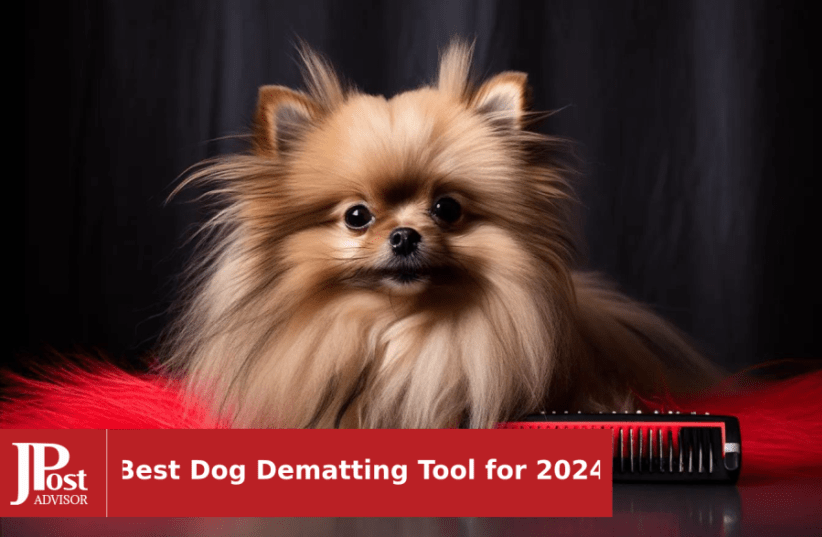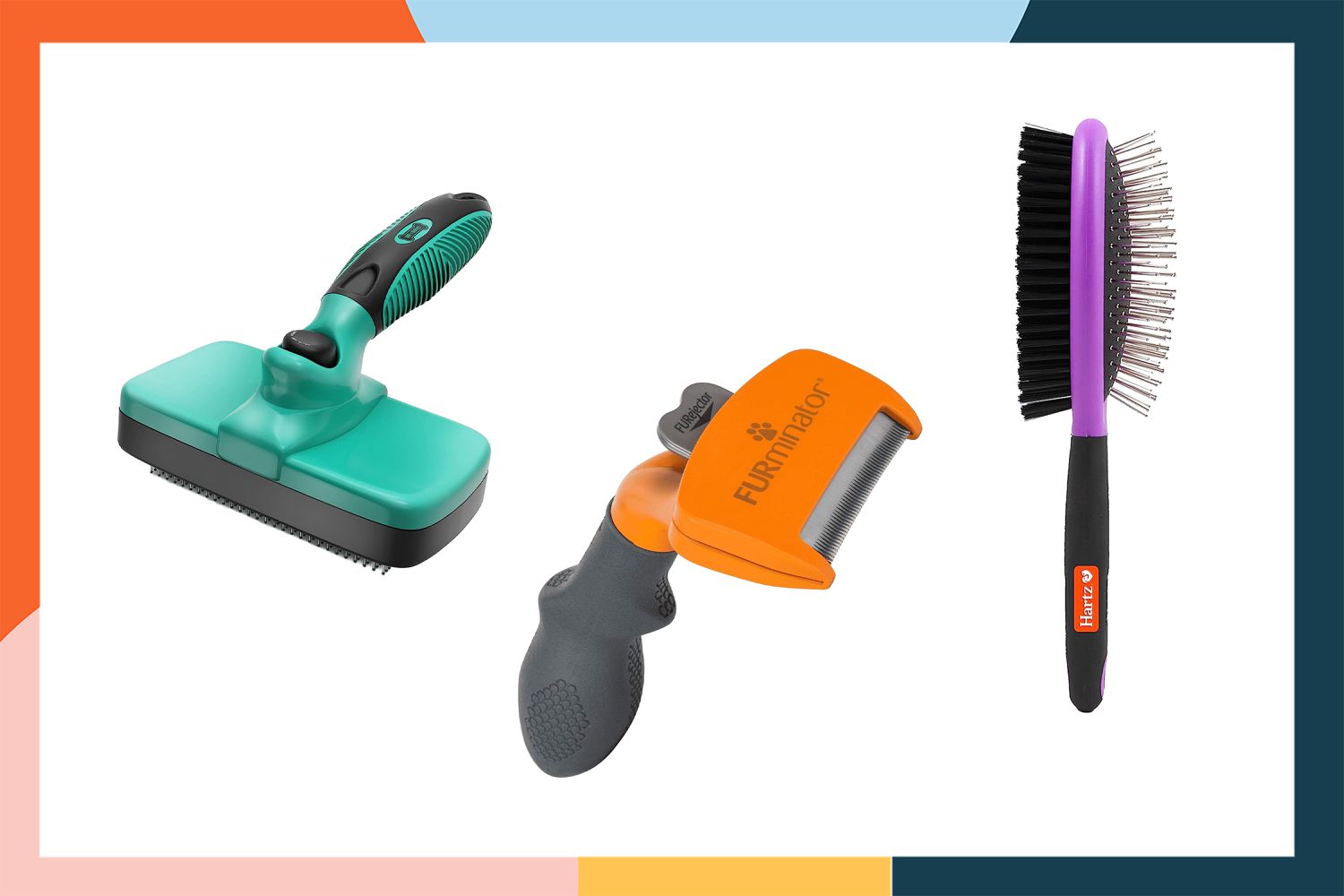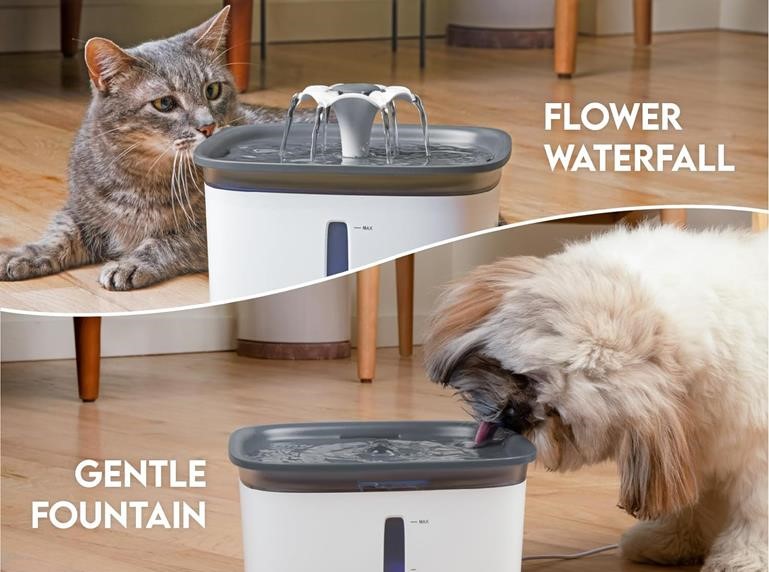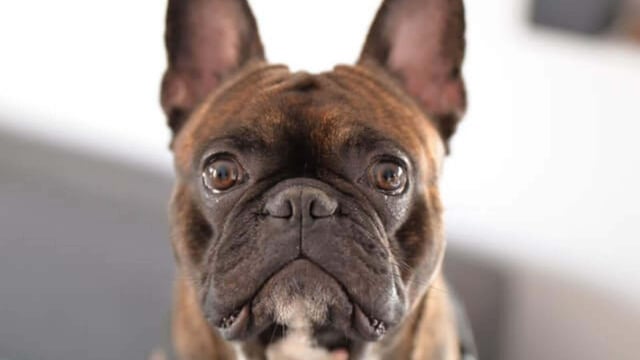The best grooming tools for de-matting your dog are slicker brushes and de-matting combs. These tools effectively remove tangles and prevent mat formation in your dog’s fur.
Grooming your furry friend doesn’t just keep them looking sharp; it’s crucial for their overall well-being. Mats in your dog’s fur can cause discomfort and potentially lead to skin issues. A slicker brush, with its fine, short wires, is ideal for gently untangling minor knots and removing loose fur.
For tougher mats, a de-matting comb with sharp, curved blades can cut through the tangles without harming your dog’s skin. Regular use of these tools can help maintain your dog’s coat health and keep those pesky mats at bay. Choosing the right grooming tools not only eases the de-matting process but also makes the experience comfortable for your canine companion.
The Importance Of Grooming For Your Dog
Caring for your dog goes beyond regular feeding and walks. Proper grooming is essential for their overall wellbeing. Not only does it keep them looking their best, but it also prevents numerous health issues. A well-groomed dog is a happier, healthier companion.
Necessity Of Regular De-matting
De-matting your dog should be a routine part of their grooming. Matted fur can cause discomfort and lead to more serious problems if left unattended. Untangling their coat regularly ensures a shiny, healthy fur and happy pooch.
Potential Health Issues From Matted Fur
- Skin infections: Mats trap moisture, dirt, and bacteria.
- Painful tugging: Causes stress and discomfort.
- Decreased mobility: Restricts natural movement.
- Parasite risk: Fleas and ticks can hide in tangled fur.
Regular grooming prevents these issues and keeps your dog healthy and comfortable.

Credit: www.amazon.com
Identifying Mats In Your Dog’s Fur
Matting can cause discomfort and skin issues for dogs. Recognizing them early is crucial. Identifying mats in your dog’s fur is the first step in maintaining their coat health. Let’s learn how to spot the signs of matting.
Common Signs Of Matting
- Clumps: Fur sticks together, forming thick bundles.
- Tangles: Twisted fur becomes hard to comb out.
- Tight knots: Tightly wound fur spots, close to the skin.
- Rough texture: Normal fluffiness replaced by a rough feel.
Areas Prone To Mat Formation
Certain body parts often develop mats. Keep an eye on these spots:
| Body Part | Reason for Matting |
|---|---|
| Behind the ears | Friction from collars and scratching |
| Under the collar | Constant rubbing against the fur |
| Between the legs | Movement causing fur to twist and turn |
| Under the belly | Moisture from lying down on wet surfaces |
| Around the tail | Accumulation of dirt and oils |
Types Of De-matting Tools
Effective grooming is key to a happy, healthy dog. De-matting your dog’s fur can be painless with the right tools. These tools tackle tough mats and tangles efficiently. Explore the best options to keep your pet’s coat smooth and neat.
De-matting Brushes
De-matting brushes are essential for removing mats. They have long teeth to glide through fur without pulling. Designed to reach the undercoat, these brushes help to prevent future tangles.
- Slicker Brushes: Great for fine hair, removing loose fur.
- Rake Brushes: Ideal for thick coats, reach deep into heavy mats.
De-matting Combs
A de-matting comb gets through knots with minimal stress to your dog. Each tooth slices through tangles gently.
| Comb Type | Best For |
|---|---|
| Double-Sided Combs | Versatile use, two sets of teeth for different mat sizes. |
| Single-Tooth Combs | Spot treatments on smaller, tight mats. |
Detangling Sprays And Solutions
Detangling sprays make the de-matting process smoother. They condition the fur and add slip to prevent breakage.
- Spray directly onto mats before combing.
- Work in with fingers for deep penetration.
- Allow to sit, then gently comb the mats out.
Top Picks For De-matting Tools
Keeping canines comfy involves more than just regular walks and affection. Proper grooming can’t be overlooked, especially when it comes to de-matting their fur. This guide will uncover the cream of the crop in de-matting tools to keep your dog’s coat smooth and healthy.
Evaluating The Best Brushes
Dogs with long or curly hair often face matting challenges. The right brush makes all the difference. Here’s what to consider for top-tier de-matting brushes:
- Pins and bristles: Look for stainless steel teeth with rounded ends. They gently separate mats without harming the skin.
- Ergonomics: A non-slip handle ensures secure and comfortable grooming for both you and your pet.
- Durability: Choose hard-wearing materials for a brush that lasts.
Selecting The Right Combs
Combs are precision tools in your de-matting arsenal. Here’s what to focus on:
- Space between teeth: Wider tooth spacing works well for initial de-tangling. Finer teeth finish the job.
- Length: Longer teeth are excellent for deep mats in thick coats.
- Handle quality: Like brushes, a firm grip means safer, easier de-matting.
Most Effective Detangling Solutions
Sprays and conditioners can offer the edge needed for stubborn mats. Look for:
- Soothing ingredients: to nourish the skin and fur during de-matting.
- No-residue formulas: that leave coats clean and not greasy.
- Compatibility: with your dog’s skin, especially for sensitive pooches.
A combination of these tools and solutions should see an end to matting woes, keeping your dog happy, healthy, and looking their absolute best.
How To De-mat Your Dog Safely
Removing mats from your dog’s fur requires patience and the right tools. Mats can be uncomfortable, and even painful, for dogs. They often lead to skin irritation and can hide skin conditions. With careful attention, you can ensure the de-matting process is safe and stress-free. Start by gathering the proper grooming tools such as a de-matting comb, slicker brush, and detangling spray.
Step-by-step De-matting Guide
Preparation is key. Begin by finding a comfortable space where your dog can relax. Ensure good lighting to see the mats clearly.
- Inspect your dog’s coat for mats, identifying the areas that need attention.
- Apply a detangling spray to help loosen the mats without pulling the skin.
- Use a wide-toothed comb or a specialized de-matting tool to gently work through the mats.
- Start from the outer edge of the mat and slowly work your way in, holding the base of the fur to minimize pulling on the skin.
- For stubborn mats, use short, gentle strokes to gradually tease apart the fur.
- After all mats are removed, brush through the coat with a slicker brush to smooth and collect any loose fur.
Avoiding Injury During The Grooming Process
Proceed with caution to avoid injury. Keep your movements gentle and take breaks if your dog becomes agitated.
- Hold the fur at the base near the skin when de-matting to avoid pulling the skin.
- Check the temperature of any metal tools before using them on your pet to prevent burns.
- Never use scissors to cut out mats unless absolutely necessary and only with great care.
- Praise your dog and give treats to create a positive association with grooming.
- If you encounter resistance or signs of pain, consider professional help to prevent injury.
Maintaining A Tangle-free Coat
Grooming your canine companion is more than a beauty routine. It’s vital for their health and happiness. Regular brushing keeps your dog’s coat shiny and tangle-free. Neglect can lead to mats, which are not only ugly but also painful. De-matting tools make the process easier.
Regular Grooming Schedule
Set a consistent grooming schedule to prevent mats from forming. Dogs with long or curly hair need more frequent brushing. Short-haired breeds require less. Your dog’s breed and coat type determine the frequency.
- Daily brushing may be necessary for long-haired breeds.
- For short-haired dogs, a few times a week works well.
Tips For Preventing Future Mats
- Choose the right brush. A slicker brush or a rake is suitable for most hair types.
- Start brushing from the bottom, working your way up to prevent pulling.
- Use a detangling spray to ease the process on tougher mats.
- Regular baths help to keep the fur clean and less prone to tangling.
- Keep your dog dry after a bath or swim, as moisture can lead to matting.
| Dog Coat Type | Brushing Frequency |
|---|---|
| Long-haired | Daily |
| Short-haired | 2-3 times a week |
Professional Grooming Vs. Home Grooming
Every pet parent faces the choice between professional grooming and tackling their furry friend’s mats at home. Both methods have their place in your dog’s grooming routine. Understanding when to seek professional help and learning home grooming techniques can save time, money, and distress for both you and your dog.
When To Seek Professional Help
- Severe Matting: Professionals tackle tough mats safely.
- Sensitive Areas: Experts handle ears, eyes, and other delicate spots.
- Behavioral Issues: Groomers manage fussy pets effectively.
Some situations call for a grooming expert. These include severe matting that you cannot safely remove or when your dog gets anxious and requires a reassuring professional touch. Expert groomers possess the right tools and experience to handle these challenges without harm to your pet.
Benefits Of Learning Home Grooming Techniques
- Bonding Time: Grooming at home strengthens your bond.
- Cost-Effective: Save money with regular home maintenance.
- Immediate Care: Address mats right when they appear.
Learning to groom at home can be rewarding. Regular brushing can prevent mats from forming. It also means no waiting for appointments, which can be particularly beneficial if your dog’s coat is prone to matting. Simple tools like a de-matting comb or brush can be effective for maintenance, keeping your dog comfortable and free of painful tangles.
Credit: www.businessinsider.com

Credit: www.jpost.com
Frequently Asked Questions For Best Grooming Tools For De Matting Your Dog
What Are The Top De Matting Tools For Dogs?
The top de matting tools for dogs typically include specialized brushes like undercoat rakes, de matting combs, and slicker brushes. These tools are designed to gently remove mats without pulling on the skin or causing discomfort to your pet.
How Often Should You De-mat Your Dog’s Fur?
De-matting frequency depends on your dog’s breed, coat type, and activities. Most dogs with long hair or prone to matting need de-matting every few weeks. Regular brushing can help reduce the need for frequent de-matting by preventing mats from forming.
Can De Matting Cause Pain To Dogs?
If not done carefully, de matting can be uncomfortable for dogs. Always use the appropriate tool and technique to ensure a painless experience. If mats are severe, consider professional grooming services to avoid hurting your dog.
What’s The Safest Way To De Mat A Dog?
The safest way to de-mat a dog is to work slowly and patiently, using the right tools. Start by gently brushing the coat to remove loose fur, then carefully tackle the mats without pulling hard. If needed, a detangling spray can make the process easier.
Conclusion
Ensuring your dog’s coat stays free of mats is crucial for their comfort and well-being. The right grooming tools are indispensable allies in this quest. From slicker brushes to dematting combs, each plays a role in maintaining a healthy, tangle-free fur.
Arm yourself with knowledge and the best tools; your furry friend will thank you with endless tail wags and cozy cuddles. Choose wisely and groom with love!



